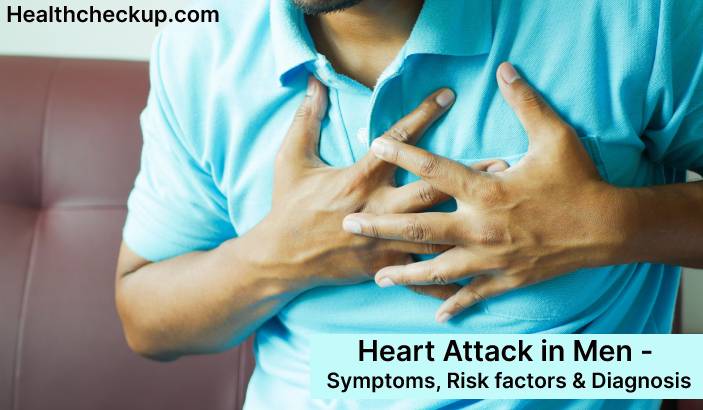A heart attack, also known as a myocardial infarction, is a serious and potentially life-threatening medical emergency that occurs when the blood flow to the heart is blocked. Heart attacks can be caused by a variety of factors, including coronary artery disease, high blood pressure, and unhealthy lifestyle habits. It is important for men to be aware of the potential signs and symptoms of a heart attack and to seek medical help immediately if they suspect they are having one.
What are the symptoms of a heart attack in men?
The most common symptom of a heart attack is chest pain or discomfort, which may feel like a crushing or squeezing sensation. Other symptoms of a heart attack in men may include:
- Shortness of breath
- Nausea or vomiting
- Sweating
- Lightheadedness or dizziness
- Pain or discomfort in the jaw, neck, back, arms, or stomach
- Unusual fatigue or weakness
These symptoms may occur alone or in combination, and they may come and go or be constant. They may also be mild or severe. It is important to note that not all heart attacks involve chest pain, and some people, particularly men, may not experience any chest pain at all.
Risk factors for heart attack in men
There are several factors that can increase a man’s risk of having a heart attack, including:
- Age: Men over the age of 45 are more likely to have a heart attack than younger men.
- Family history: If a man has a family history of heart disease, he is more likely to develop heart disease himself.
- High blood pressure: High blood pressure, or hypertension, can increase a man’s risk of heart attack.
- High cholesterol: High levels of cholesterol in the blood can increase a man’s risk of heart attack.
- Diabetes: Men with diabetes are more likely to develop heart disease than men without diabetes.
- Obesity: Being overweight or obese can increase a man’s risk of heart attack.
- Smoking: Smoking increases the risk of heart attack in both men and women.
- Stress: Chronic stress can increase a man’s risk of heart attack.
- Sedentary lifestyle: Lack of physical activity can increase a man’s risk of heart attack.
It is important for men to be aware of their risk factors for heart attack and to take steps to reduce their risk, such as maintaining a healthy diet and lifestyle, managing stress, and getting regular medical check-ups.
How is a heart attack diagnosed in men?
If a man suspects that he is having a heart attack, he should call 911 or his local emergency number immediately. Medical professionals will ask him questions about his symptoms and medical history and may perform a physical examination. They may also order tests to diagnose a heart attack, such as:
- Electrocardiogram (ECG): This test measures the electrical activity of the heart and can help to diagnose a heart attack.
- Blood tests: Blood tests can measure the levels of certain enzymes and proteins that are released into the blood when the heart muscle is damaged.
- Chest x-ray: This test can help to identify any abnormalities in the heart or lungs.
- Echocardiogram: This test uses sound waves to create an image of the heart, which can help to diagnose a heart attack.
- Coronary angiography: This test involves injecting a dye into the blood vessels of the heart and taking x-rays to see if there are any blockages in the coronary arteries.









